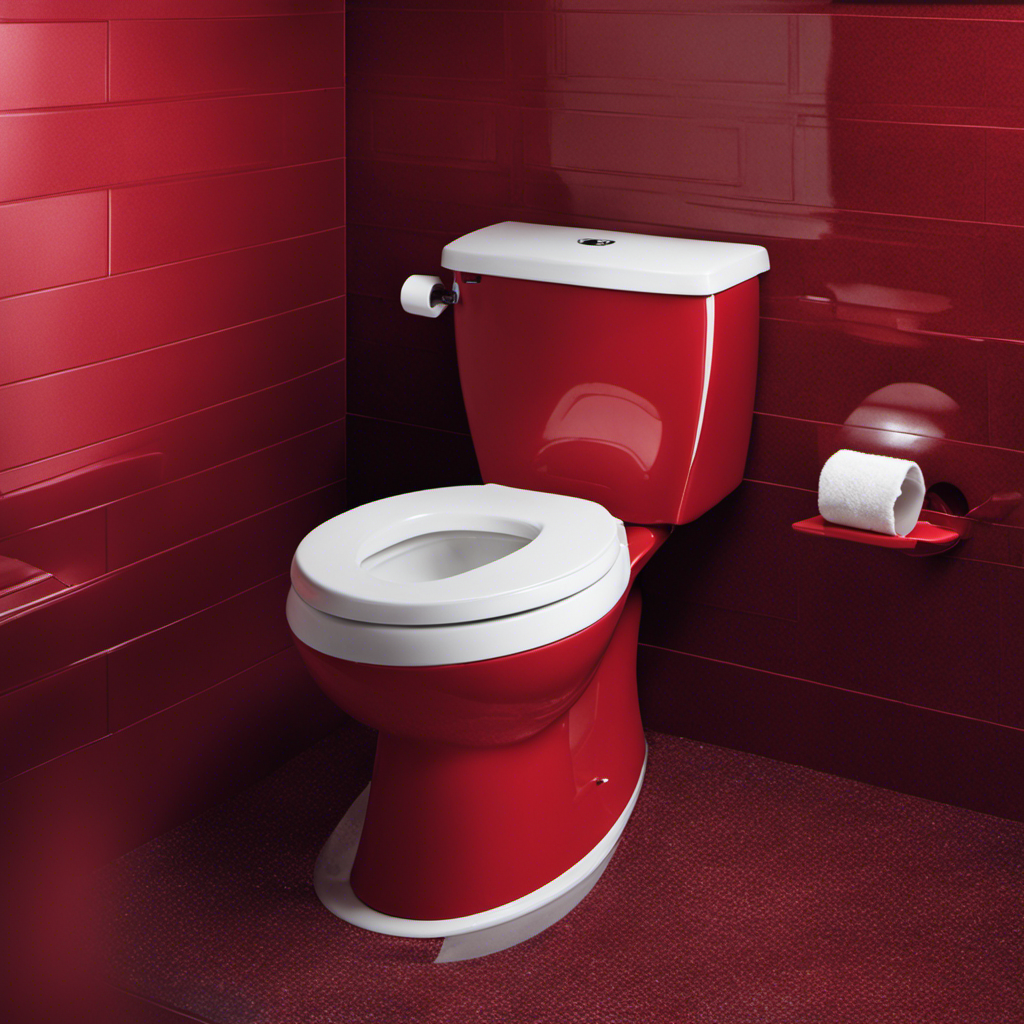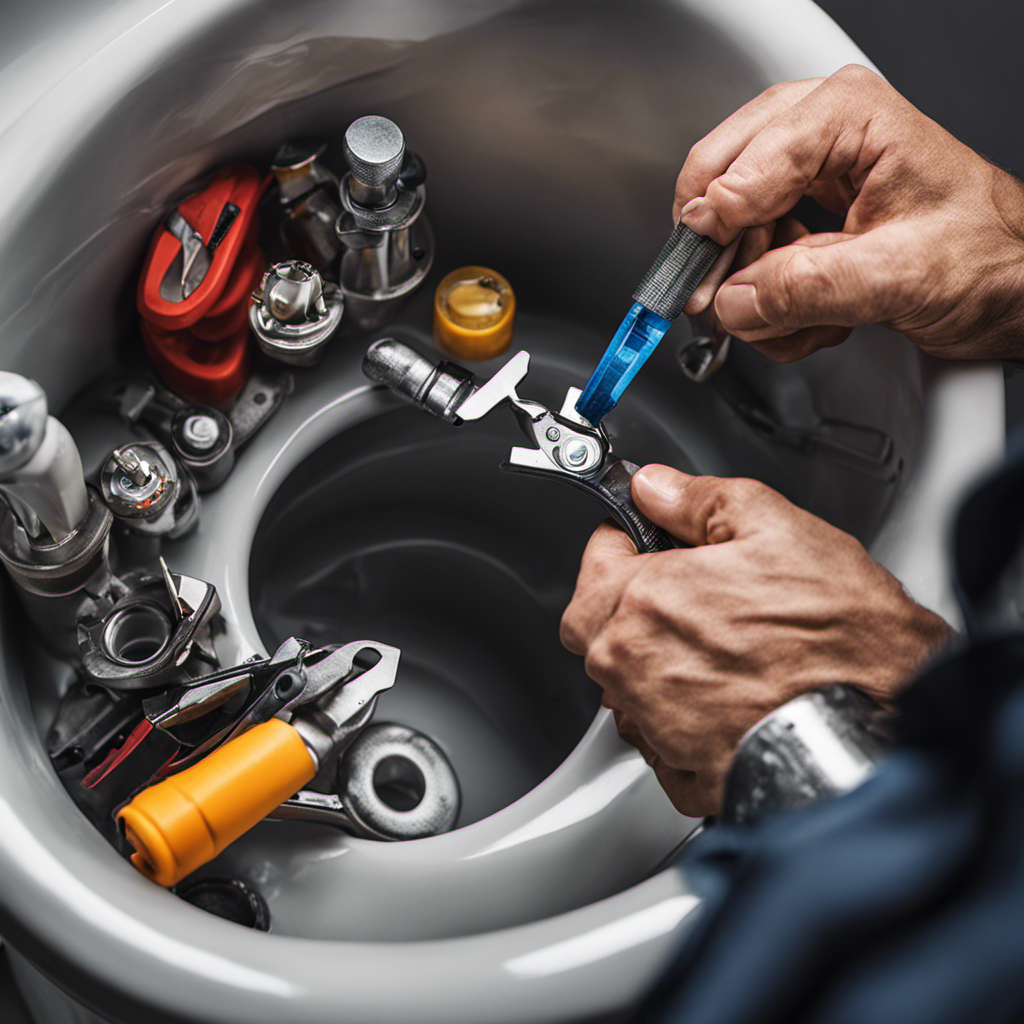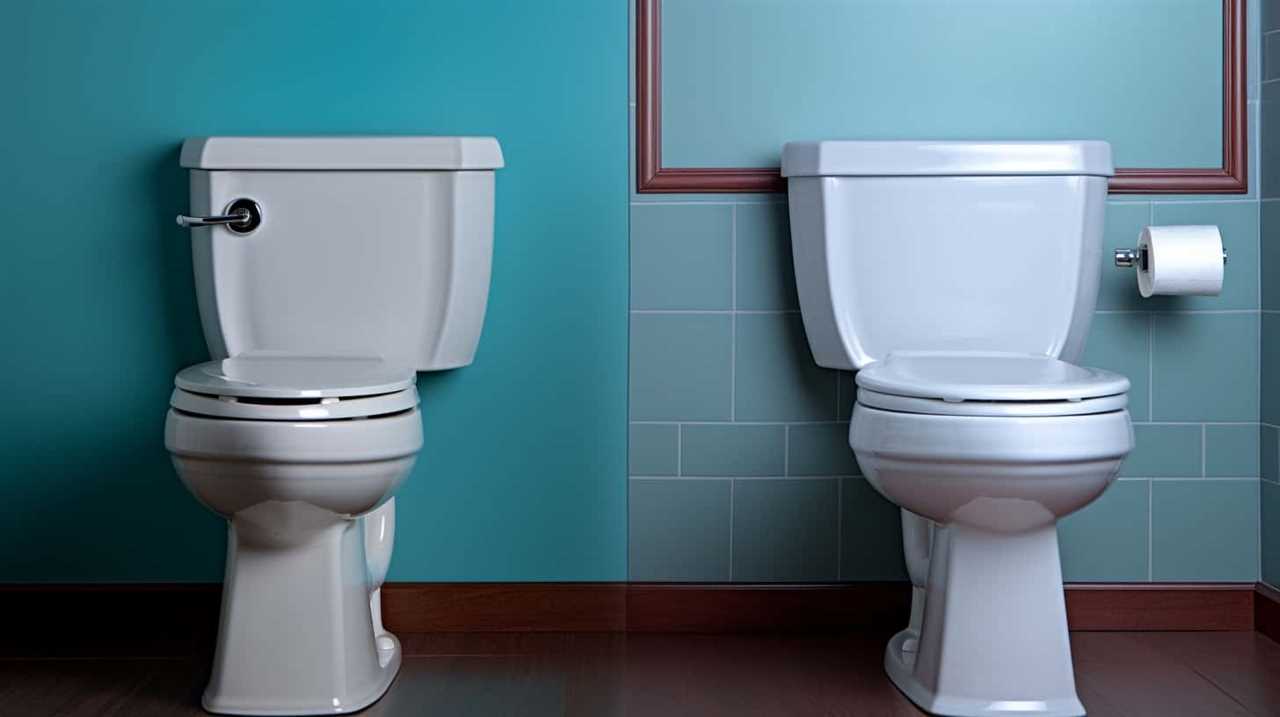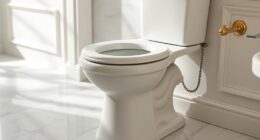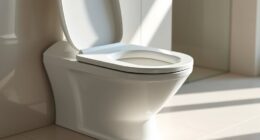We’ve all found ourselves there – pausing before the cat litter box, contemplating how to dispose of those clumps of cat waste. Is flushing it an option? It appears to be an easy solution, but one might wonder, is it actually a safe practice?
In this article, we dive into the debate on flushing cat poop, exploring the sanitary concerns, environmental impact, and plumbing system capacity. With the help of Reddit users’ experiences and municipal guidelines, we aim to provide evidence-based insights on whether flushing cat poop is a wise choice.
Key Takeaways
- Flushing cat poop can pose risks to plumbing systems and cause blockages in pipes.
- Cat feces often contain parasites and harmful bacteria that can contaminate water sources.
- Proper disposal methods, such as bagging cat waste and disposing of it in the trash, are recommended to minimize environmental impact and protect public health.
- Alternatives to flushing cat waste include using biodegradable cat litter made from natural materials and composting cat waste if done correctly.
The Debate on Flushing Cat Poop
We’ve been debating whether it’s safe to flush cat poop for quite some time now. When it comes to cat poop disposal, there are two main methods to consider: flushing and composting. Let’s compare these two methods to determine which is the safest and most effective option.
Flushing cat waste may seem convenient, as it allows for easy disposal through your toilet. However, it’s important to note that flushing cat poop can pose risks to both your plumbing system and the environment. Cat feces often contain a parasite called Toxoplasma gondii, which can survive in water sources and potentially harm marine life. Additionally, flushing cat litter or waste with clay-based litter can clog pipes and cause costly plumbing issues.

On the other hand, composting cat waste offers a more eco-friendly solution. By using a specialized composting system, you can safely decompose cat poop and turn it into nutrient-rich fertilizer. This method eliminates the risk of contaminating water sources and reduces waste sent to landfills. However, it’s important to follow proper guidelines and precautions to ensure the compost is safe for use.
Sanitary Concerns of Flushing Cat Waste
When it comes to flushing cat waste, there are several sanitary concerns that need to be addressed.
Firstly, the environmental impact of flushing cat poop is a major concern, as it can contribute to water pollution and harm aquatic ecosystems.
Additionally, there are potential plumbing system implications, as flushing cat litter can lead to clogs and damage to pipes.
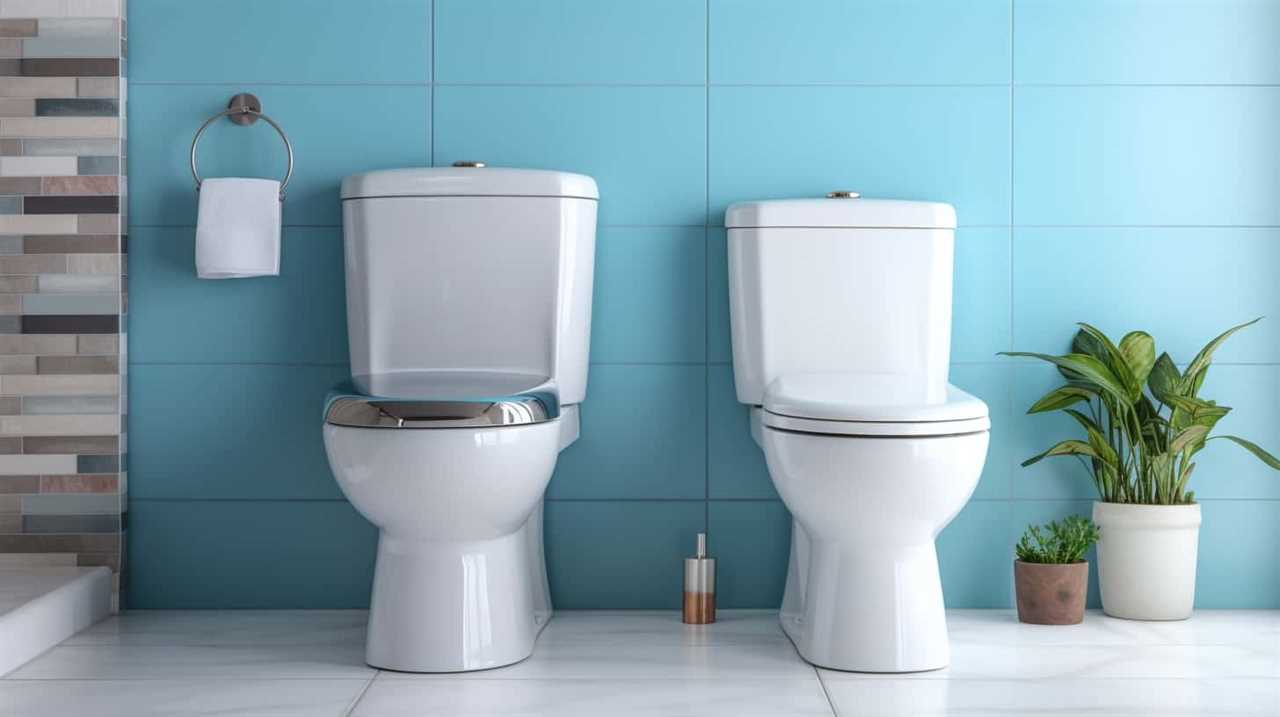
Lastly, there are health risks associated with flushing cat waste, as certain parasites and bacteria present in cat feces can contaminate water sources and pose a risk to human health.
Environmental Impact of Flushing
Flushing cat waste poses potential environmental risks due to the improper disposal of fecal matter into the sewage system. While it may seem convenient to flush cat poop down the toilet, it can have negative consequences for both the plumbing system and the environment.
One of the main concerns is the limitations of the plumbing system. Cat litter can cause blockages in pipes, leading to costly repairs and disruptions in the sewage system. Additionally, cat waste contains harmful bacteria and parasites that can contaminate water sources if not properly treated.
To help visualize the potential environmental impact, consider the following table:
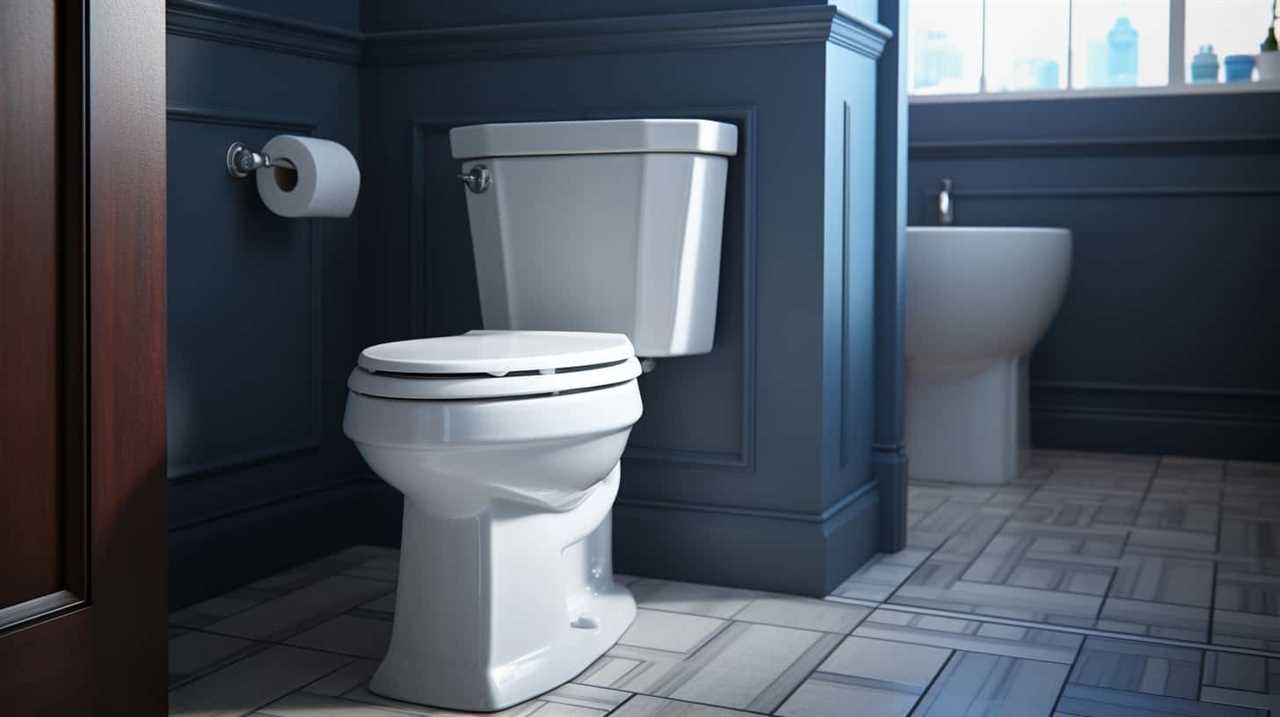
| Environmental Risks of Flushing Cat Waste |
|---|
| Plumbing system limitations |
| Blockages in pipes |
| Disruptions in the sewage system |
| Contamination of water sources |
To minimize these risks, it is important to explore eco-friendly alternatives for cat waste disposal. One option is to use biodegradable cat litter made from renewable resources. Another alternative is to compost the cat waste in a dedicated composting system. These alternatives not only reduce the environmental impact but also promote sustainability and responsible pet ownership.
Plumbing System Implications
To further examine the potential risks associated with flushing cat waste, let’s delve into the implications it can have on the plumbing system and the overall sanitation concerns.
When it comes to plumbing system maintenance, flushing cat poop down the toilet can pose serious problems. The waste can easily clog the pipes, leading to blockages and backups. This can result in costly repairs and inconvenience for homeowners.
Additionally, if you have a septic tank, flushing cat waste can disrupt the delicate balance of bacteria that help break down waste. This can lead to septic tank failures and the need for expensive repairs or replacements.
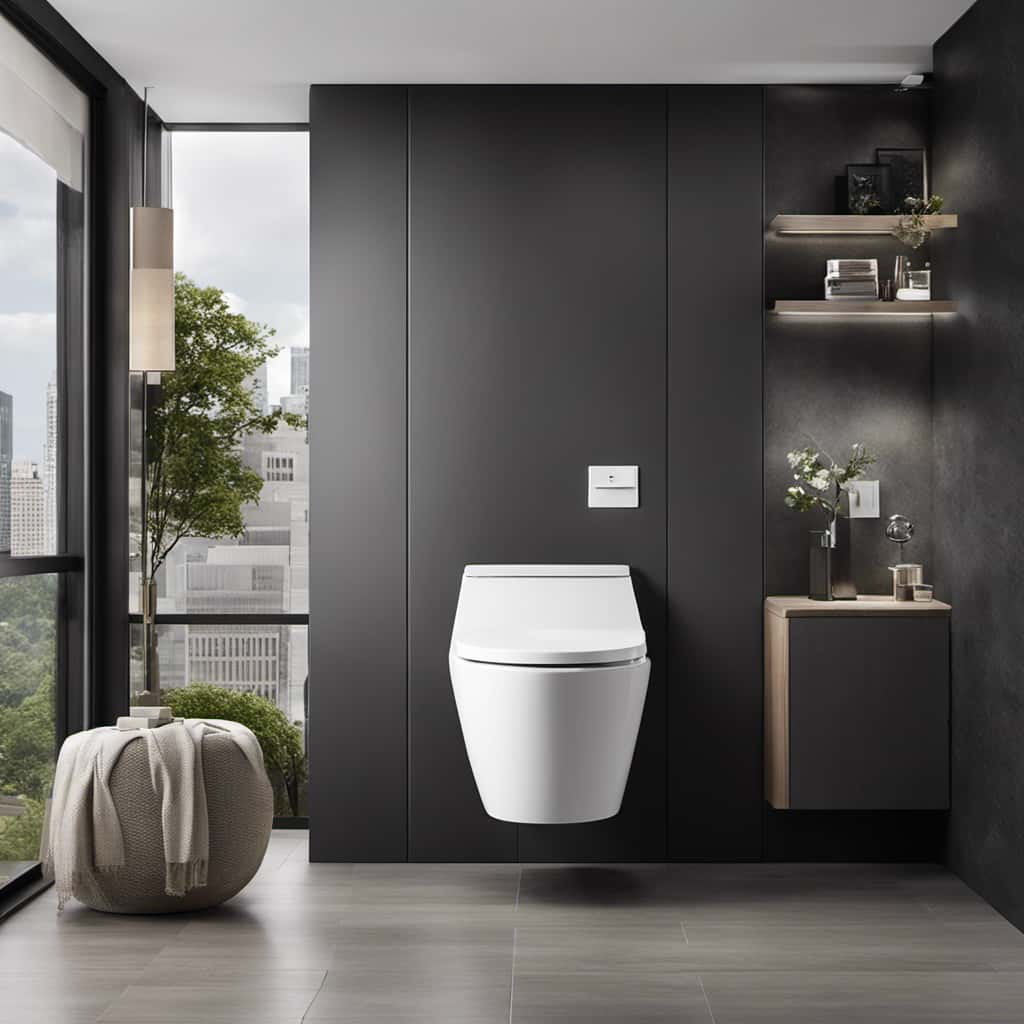
It’s essential to consider these septic tank considerations and seek alternative disposal methods, such as bagging and disposing of cat waste in the trash. Prioritizing proper plumbing system maintenance and septic tank care is crucial for a healthy and functional home.
Health Risks and Contamination
There are potential health risks and contamination concerns associated with flushing cat waste down the toilet. It’s important to understand the proper disposal methods to prevent these risks. Here are four key points to consider:
- Toxoplasmosis: Cat feces may contain the parasite Toxoplasma gondii, which can cause toxoplasmosis in humans. This infection can be dangerous, especially for pregnant women and individuals with weakened immune systems.
- Water contamination: Flushing cat waste can introduce harmful bacteria and pathogens into the water supply. These contaminants can pose a risk to both humans and aquatic life.
- Plumbing issues: Cat litter can clump and clog pipes, leading to costly plumbing repairs. Flushing large amounts of litter can also overwhelm septic systems.
- Environmental impact: The waste and litter flushed down the toilet can end up in water bodies, harming ecosystems and contributing to pollution.
To ensure the safety of both our health and the environment, it’s recommended to follow proper disposal methods for cat waste, such as using biodegradable litter and placing it in sealed bags before discarding it in the trash.
Environmental Impact of Flushing Cat Poop
When we flush cat poop, it can have a negative environmental impact. The ecological consequences of flushing cat waste are significant and shouldn’t be overlooked. Cat feces can contain harmful bacteria, parasites, and viruses that can contaminate water bodies and ecosystems. These pollutants can threaten the health of aquatic organisms and disrupt the delicate balance of the ecosystem.

Flushing cat poop can also have public health implications. One such concern is the potential for toxoplasmosis, a parasitic infection that can be transmitted through cat feces. This infection can be especially dangerous for pregnant women and individuals with weakened immune systems. When cat waste is flushed down the toilet, it can end up in water treatment plants where the parasite may not be effectively removed, putting public health at risk.
It is important to properly dispose of cat waste to minimize its environmental impact. One safe and eco-friendly option is to scoop the waste into a biodegradable bag and dispose of it in the trash. Alternatively, some municipalities offer cat waste composting programs. These programs use specialized techniques to safely compost cat waste, reducing its environmental impact.
Understanding the Plumbing System’s Capacity
As we consider the safety of flushing cat poop, it’s important to understand the capacity of our plumbing system. Here are four key points to help you understand plumbing limitations and the importance of proper disposal:
- Pipe size: The size of the pipes in your plumbing system determines how much waste they can handle. Flushing large amounts of cat poop can overwhelm the pipes and lead to clogs or backups.
- Water pressure: Your plumbing system relies on water pressure to push waste through the pipes and into the sewer or septic system. Flushing excessive amounts of cat poop can strain the water pressure and hinder proper waste removal.
- Sewer/septic system capacity: Both sewer and septic systems have limitations on the amount of waste they can handle. Flushing cat poop in large quantities can exceed these capacities and cause problems in the system.
- Environmental impact: Flushing cat poop can introduce harmful bacteria and parasites into the water supply. It’s important to dispose of cat waste properly to protect both your plumbing system and the environment.
Understanding the plumbing system’s capacity is crucial in determining whether it’s safe to flush cat poop. Now, let’s delve into reddit users’ experiences with flushing cat poop and see if it aligns with this understanding.
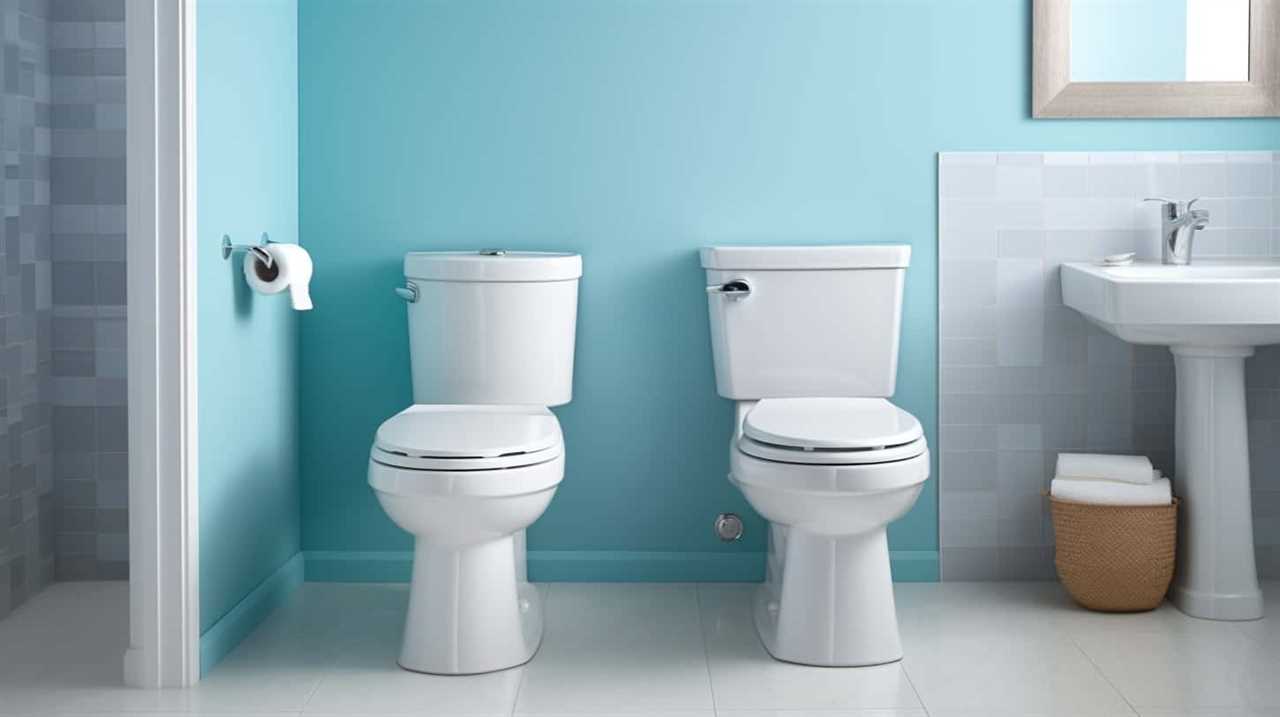
Reddit Users’ Experiences With Flushing Cat Poop
Continuing our exploration of the safety of flushing cat poop, let’s now delve into Reddit users’ experiences with this practice and how it aligns with our understanding of plumbing limitations.
The debate over septic tanks and concerns about water contamination has prompted many cat owners to seek advice on Reddit forums. While some users have reported no issues with flushing cat waste, others have shared cautionary tales.
One Reddit user mentioned that they’d been flushing cat poop for years without any problems. They claimed that their plumbing system was designed to handle such waste and that they’d never experienced any clogs or backups. However, it’s important to note that plumbing systems can vary greatly, and what works for one person may not work for another.
On the other hand, several users shared stories of clogged pipes and costly repairs after flushing cat poop. They emphasized the importance of regularly maintaining and inspecting their plumbing systems to avoid such issues. This aligns with our understanding that flushing cat waste can put a strain on the plumbing system, especially if it isn’t designed to handle it.
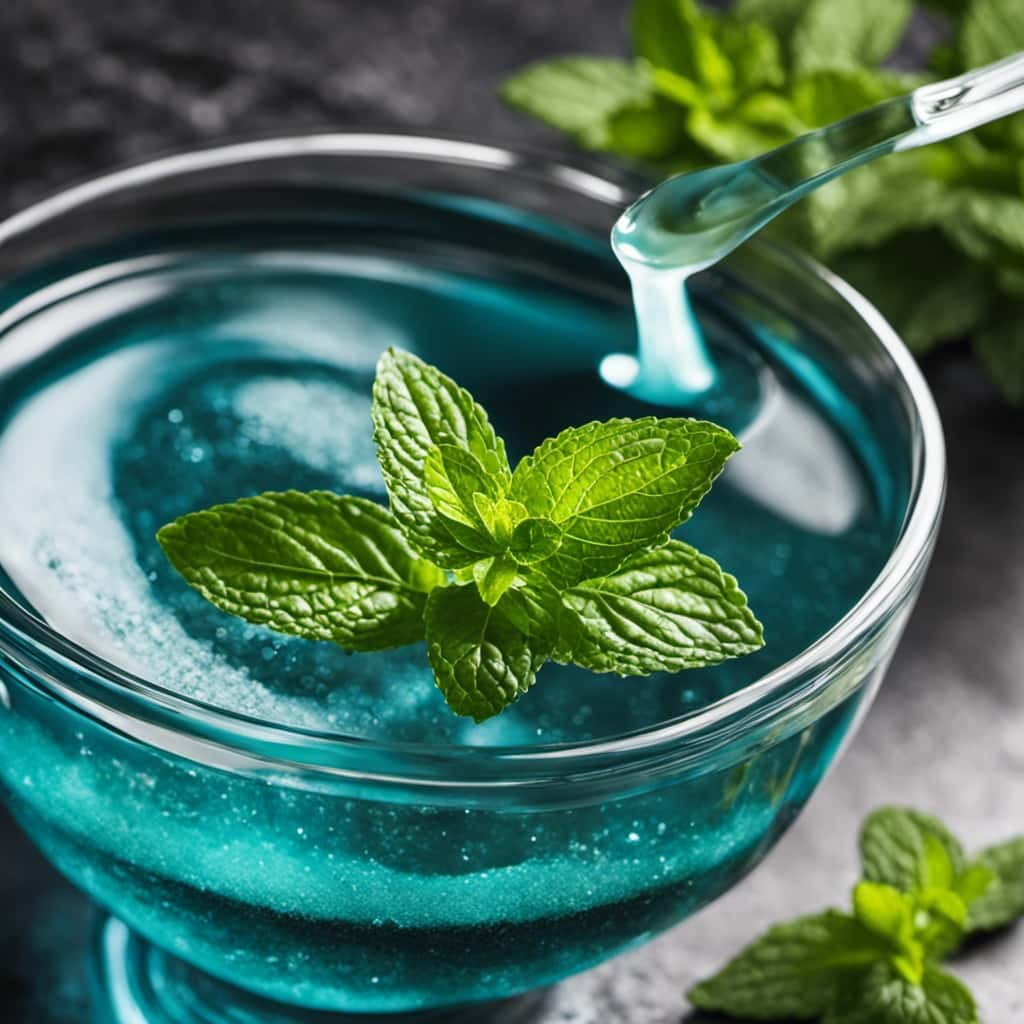
Alternatives to Flushing Cat Waste
When it comes to disposing of cat waste, there are alternatives to flushing that are both eco-friendly and safe for our health.
One option is to use biodegradable litter made from materials like corn or wheat, which can be composted or disposed of in the trash.
Another option is to invest in a pet waste disposal system specifically designed for cat waste, which uses enzymes to break down the waste and eliminate odors.
Eco-Friendly Disposal Methods
We can explore alternatives for eco-friendly disposal methods by considering options beyond simply flushing cat waste down the toilet. Here are four eco-friendly alternatives to help reduce the impact on water systems:

- Biodegradable litter: Opt for biodegradable cat litter made from natural materials like corn, wheat, or recycled paper. These litters break down easily and can be composted or disposed of in green waste bins.
- Digester systems: Consider using digester systems that break down cat waste using natural enzymes. These systems can be installed in your yard and provide a safe and environmentally friendly way to dispose of cat waste.
- Outdoor burying: If you have a yard, you can bury the cat waste in a designated area away from vegetable gardens or water sources. Be sure to dig a hole deep enough to prevent any runoff and cover it with soil.
- Pet waste composting: Composting cat waste in a dedicated compost bin is another eco-friendly option. Make sure to use a specific compost bin for pet waste and avoid using the compost on edible plants.
Health Risks of Flushing
One important consideration when it comes to flushing cat waste is the potential health risks involved. While it may seem convenient to simply flush it down the toilet, there are sanitary risks and health hazards associated with this method. Flushing cat poop can introduce harmful pathogens and parasites into the water supply, posing a risk to human health. To better understand the risks, let’s take a look at the table below:
| Health Risks | Potential Consequences |
|---|---|
| Toxoplasmosis | Flu-like symptoms |
| Salmonellosis | Diarrhea, fever, abdominal pain |
| Campylobacteriosis | Diarrhea, cramps, fever |
| Cryptosporidiosis | Diarrhea, stomach cramps, dehydration |
It is evident that flushing cat waste can expose us to various health hazards. Therefore, it is important to explore alternative methods of disposal. In the next section, we will discuss the impact of cat litter and its effect on flushing.
Cat Litter and Its Effect on Flushing
Many cat owners are unaware of the potential consequences of flushing cat litter down the toilet. While it may seem convenient, cat litter disposal through flushing can have detrimental effects on both your plumbing system and the environment. Here are four important facts to consider:
- Septic system compatibility: Flushing cat litter can be particularly problematic for homes with septic systems. Cat litter is often made from materials like clay or silica, which don’t break down easily. These non-biodegradable substances can clog pipes, leading to costly repairs and potential sewage backups.
- Environmental impact: Flushed cat litter can end up in rivers, lakes, and oceans, posing a threat to aquatic life. Additionally, cat feces may contain harmful pathogens that can contaminate water sources and harm marine ecosystems.
- Toxin release: Some cat litters contain additives or fragrances that can be harmful when released into the environment. These chemicals may disrupt the balance of ecosystems and harm wildlife.
- Alternatives for disposal: Instead of flushing, consider using more environmentally friendly methods for cat litter disposal. Options include using biodegradable litter made from sustainable materials and disposing of used litter in sealed bags in the regular trash.
The Risk of Clogging and Plumbing Issues
Flushing cat poop can pose a significant risk of clogging and causing plumbing issues in your home. While it may seem convenient to dispose of cat waste by flushing it down the toilet, it’s important to consider the potential consequences. Cat feces can contain parasites and bacteria that are harmful to human health, and flushing it can lead to clogs in your plumbing system.

When cat poop is flushed, it can accumulate and create blockages in your pipes. This can result in slow drains, clogged toilets, and even sewage backups. Dealing with these plumbing issues can be costly and time-consuming, not to mention the unpleasant odors and unsanitary conditions that can arise.
Furthermore, the risk of clogging isn’t the only concern when it comes to flushing cat poop. Cat feces can contain pathogens such as Toxoplasma gondii, which can cause serious health hazards, especially for pregnant women and people with weakened immune systems. These pathogens can survive in water sources and pose a risk to both humans and wildlife.
To avoid these risks, it’s best to dispose of cat poop in the trash, preferably in a sealed bag. This ensures that it’s properly contained and disposed of without causing any plumbing issues or health hazards. Remember, it’s better to be safe than sorry when it comes to flushing cat poop.
Health Risks Associated With Flushing Cat Poop
Flushing cat poop can have detrimental effects on our health due to the presence of harmful pathogens and bacteria. While there’s ongoing debate on the specific health risks associated with flushing cat waste, it’s important to consider the potential dangers involved.
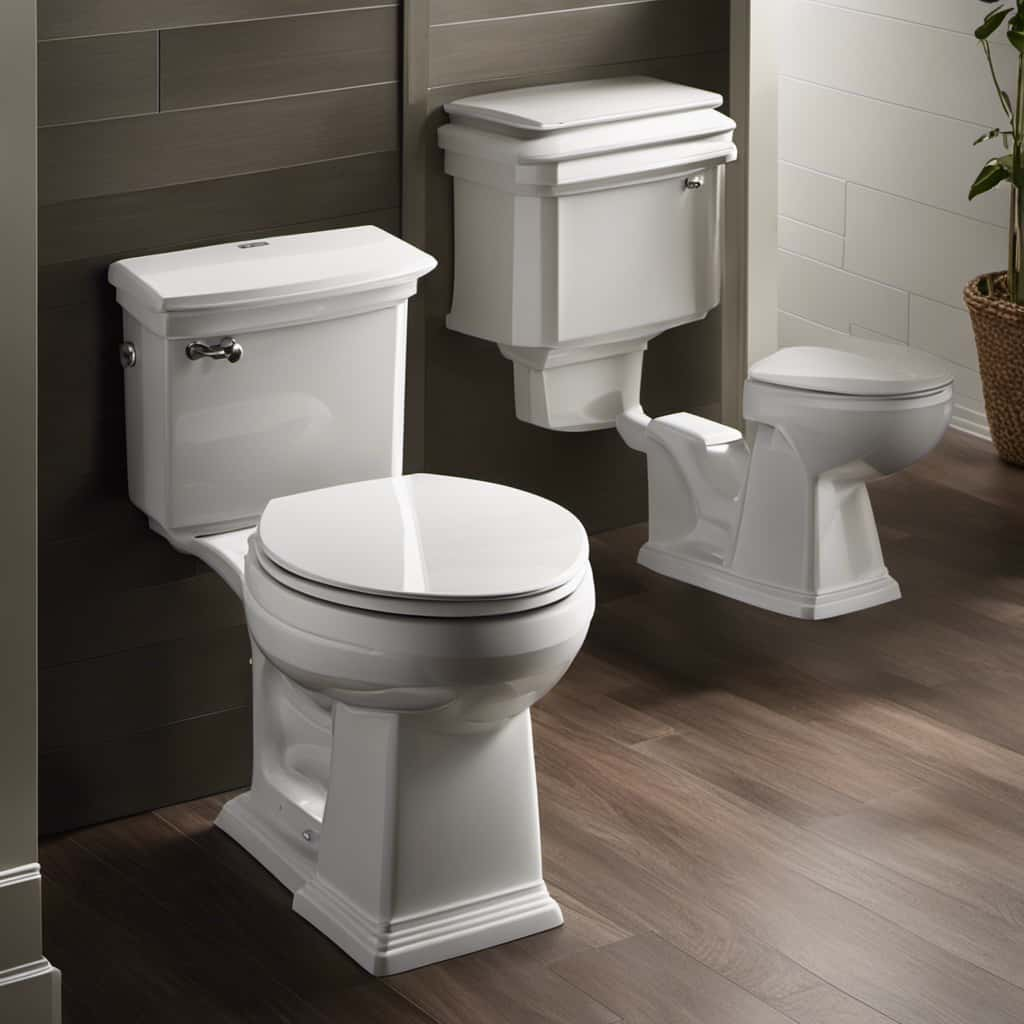
Here are four reasons why proper disposal methods should be followed:
- Toxoplasmosis: Cat feces can contain the parasite Toxoplasma gondii, which can cause toxoplasmosis in humans. This infection can be especially dangerous for pregnant women, as it can lead to severe complications for the unborn baby.
- Bacterial Infections: Cat feces may carry bacteria such as Salmonella and E. coli, which can cause food poisoning and gastrointestinal infections in humans. These infections can result in symptoms such as diarrhea, abdominal pain, and fever.
- Contamination of Water Sources: Flushing cat poop can contribute to the contamination of water sources, such as rivers and lakes, with harmful pathogens. This can pose a risk to both human and animal health, as these contaminated water sources can be used for drinking, swimming, and irrigation.
- Environmental Impact: Improper disposal of cat waste can have negative effects on the environment. When flushed, cat poop can end up in wastewater treatment plants, where it may not be effectively removed. This can lead to the release of harmful bacteria and parasites into the environment.
Given these potential health risks, it’s important to follow proper disposal methods for cat waste. Municipal guidelines on flushing cat waste can provide valuable information on the safest and most environmentally friendly ways to dispose of it.
Municipal Guidelines on Flushing Cat Waste
When it comes to flushing cat waste, it’s important to follow municipal guidelines to ensure safe disposal. These guidelines are put in place to protect the environment and prevent any potential health risks.
Safe Cat Waste Disposal
According to municipal guidelines, our community encourages the safe disposal of cat waste. Proper cat waste management is essential to maintain a clean and healthy environment. Here are four eco-friendly disposal options that you should consider:
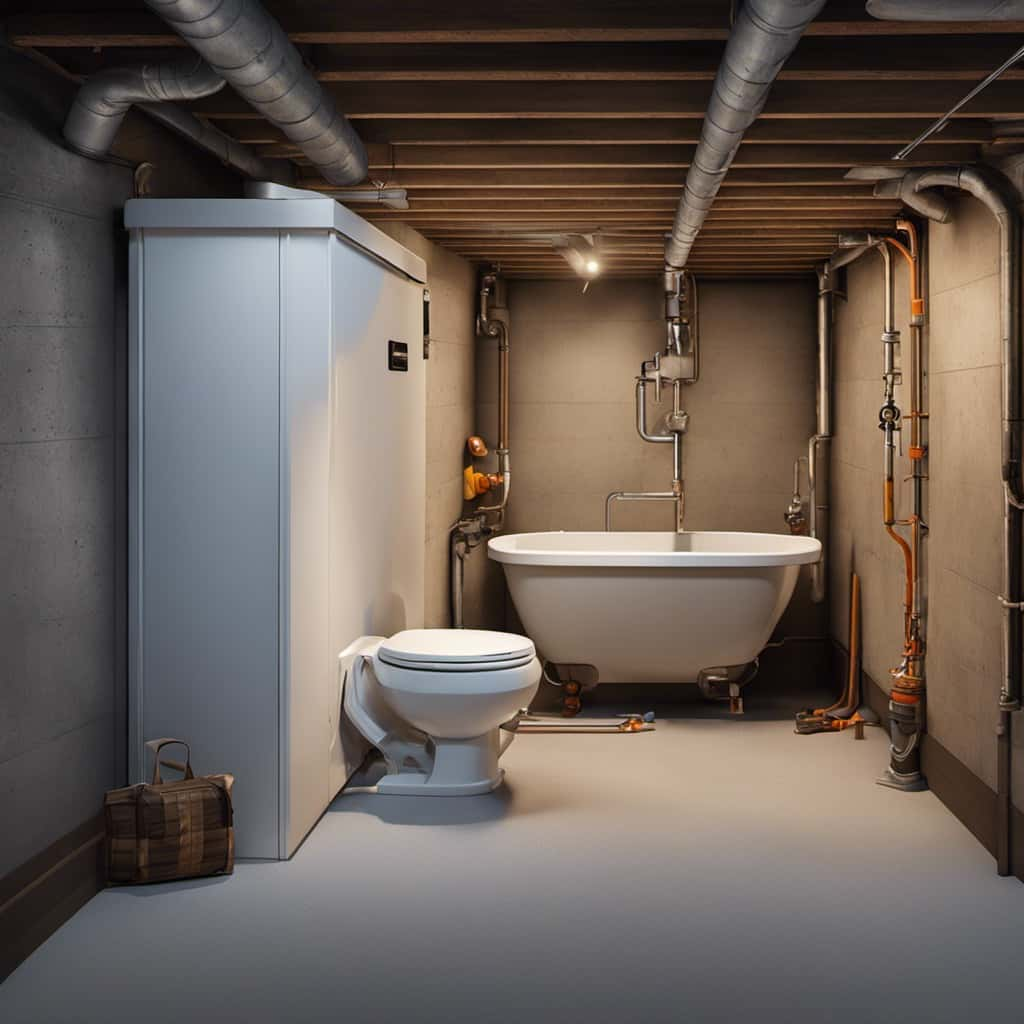
- Biodegradable Cat Litter: Opt for biodegradable cat litter made from natural materials like wood, paper, or corn. This type of litter can be composted or disposed of in your green waste bin.
- Composting: If you have a compost bin, you can safely dispose of cat waste by burying it deep within the compost pile. However, be cautious not to use compost intended for edible plants.
- Pet Waste Disposal Systems: Consider investing in pet waste disposal systems that use enzymes or bacteria to break down cat waste. These systems are designed to be environmentally friendly and prevent contamination of water sources.
- Cat Waste Collection Services: Some municipalities offer cat waste collection services, where you can dispose of cat waste in specially designated bins. This ensures proper disposal and prevents contamination of regular waste.
Environmental Impact of Flushing?
To continue our discussion on the safe disposal of cat waste, let’s explore the environmental impact of flushing and the municipal guidelines surrounding the flushing of cat waste. Flushing cat waste may seem convenient, but it is important to consider the potential risks and environmental consequences.
When cat waste is flushed down the toilet, it enters the municipal sewage system. While sewage treatment plants are designed to remove contaminants, they are not equipped to handle certain pathogens found in cat feces, such as Toxoplasma gondii. This parasite can survive the treatment process and end up in water bodies, posing a risk to marine life and human health.
Municipal guidelines vary, but many advise against flushing cat waste. Instead, they recommend bagging cat waste and disposing of it in the regular trash. This helps prevent the spread of harmful pathogens and reduces the environmental impact of flushing.
To further illustrate the potential risks and environmental consequences of flushing cat waste, consider the table below:

| Flushing Cat Waste Risks | Environmental Consequences of Flushing |
|---|---|
| Spread of pathogens | Contamination of water bodies |
| Harm to marine life | Potential human health risks |
| Inefficiency of treatment | Increased strain on sewage systems |
It is crucial to follow municipal guidelines and adopt responsible cat waste disposal practices to minimize the environmental impact and protect both our ecosystems and public health.
Biodegradable Cat Litter and Flushing
We have found that flushing biodegradable cat litter is a safe and environmentally friendly option. Here are four reasons why:
- Reduced landfill waste: Biodegradable cat litter alternatives, such as those made from plant-based materials like corn or wheat, break down naturally over time. By flushing these litters, we can help reduce the amount of waste that ends up in landfills.
- Water conservation: Flushing biodegradable cat litter allows for the efficient use of water resources. Instead of using large amounts of water to clean and dispose of litter in the trash, flushing enables us to use existing plumbing systems and wastewater treatment facilities.
- Composting cat waste: Some biodegradable litters are suitable for composting along with cat waste. This process can help create nutrient-rich compost that can be used to enrich soil in gardens or landscaping projects.
- Convenience and cleanliness: Flushing biodegradable cat litter eliminates the need for scooping and disposing of waste in the trash. This can make cleaning the litter box easier and more hygienic, reducing the risk of odor and bacterial growth.
When considering biodegradable cat litter and flushing as an option, it’s important to choose litters that are specifically labeled as flushable and follow any instructions provided by the manufacturer. Additionally, it’s essential to check with local regulations and wastewater management authorities to ensure that flushing cat waste is permitted in your area.
Tips for Properly Flushing Cat Poop
Flushing cat poop properly involves following these simple steps.

First and foremost, it’s essential to minimize odor to ensure a pleasant experience for everyone. One tip is to scoop the litter box regularly to remove any solid waste. This prevents the buildup of bacteria that can contribute to unpleasant odors. Additionally, using a high-quality cat litter that’s specifically designed to minimize odor can make a significant difference.
When it comes to flushing cat poop, it’s crucial to understand the proper use of septic systems and toilets. Many septic systems aren’t designed to handle cat waste, so it’s best to avoid flushing it if you have a septic system. Instead, consider using biodegradable bags to dispose of the waste in the trash. If you have a regular toilet connected to a public sewer system, flushing cat poop is generally safe. However, always check with your local sanitation department to ensure compliance with any specific regulations in your area.
Final Verdict: Should You Flush Cat Poop?
In our experience, flushing cat poop may not always be the safest option. While it may seem convenient, there are several factors to consider before deciding to flush. Here are four reasons why you should explore alternative methods:
- Environmental impact: Flushing cat poop can introduce harmful pathogens and bacteria into water systems, posing a risk to aquatic life and ecosystems.
- Plumbing issues: Cat litter isn’t designed to dissolve in water like toilet paper, which can lead to clogged pipes and costly repairs.
- Water treatment concerns: Traditional water treatment processes may not effectively remove all the pathogens present in cat feces, potentially contaminating water sources.
- Sanitary alternatives: Instead of flushing, consider using biodegradable cat litter and disposing of it in a sealed bag in your regular trash. This ensures proper containment and minimizes environmental impact.
Composting options: Another eco-friendly alternative is composting cat poop. However, it’s important to note that not all composting methods are suitable for cat waste. Research specific composting systems designed to handle pet waste safely.

Frequently Asked Questions
Can Flushing Cat Poop Cause Damage to Your Plumbing System?
Flushing cat poop can indeed cause damage to your plumbing system. The solid waste can clog pipes and create blockages, leading to costly repairs.
Moreover, cat feces may contain harmful bacteria, parasites, and viruses that can contaminate water sources if flushed.
It’s crucial to dispose of cat waste properly by scooping it into a sealed bag and placing it in the trash.
This ensures the safety of your plumbing and prevents potential contamination.
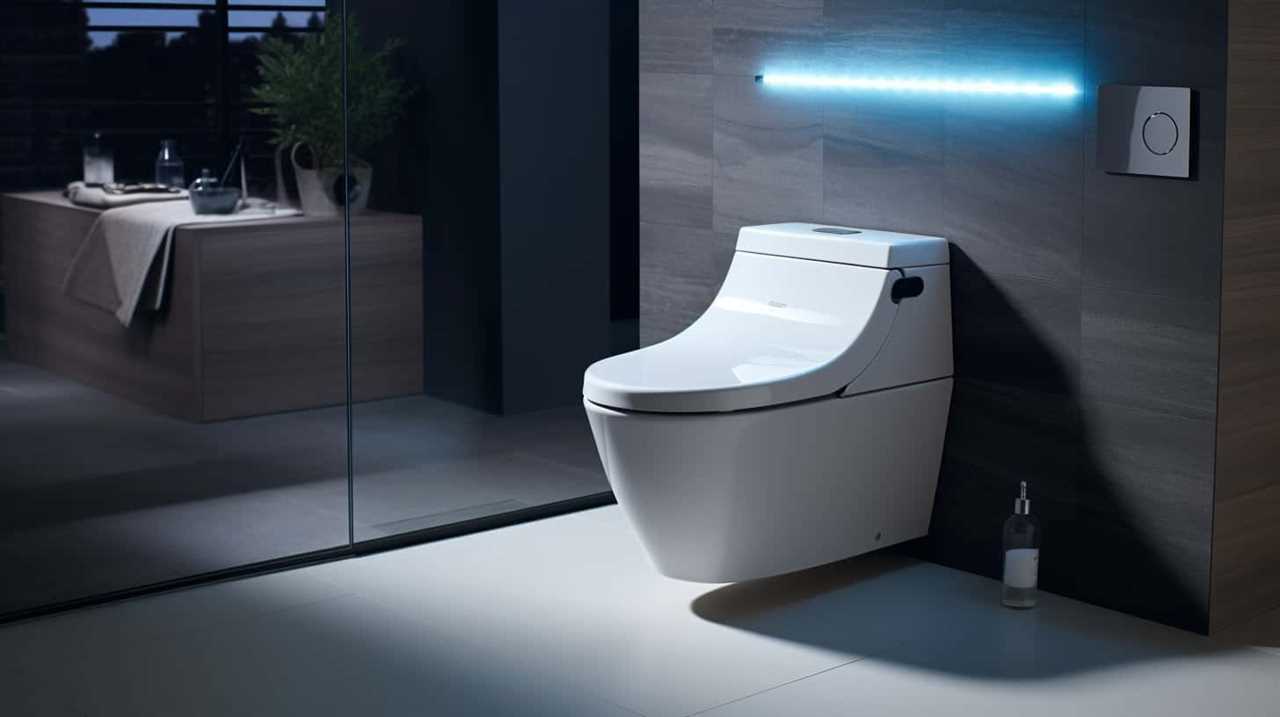
Are There Any Health Risks Associated With Flushing Cat Poop?
When it comes to the health risks associated with flushing cat poop, we need to be cautious. While it may seem convenient, flushing cat poop can actually pose risks to our plumbing system and the environment.
It’s important to remember that cat feces can contain harmful bacteria and parasites that can contaminate water sources. Therefore, it’s recommended to explore alternative disposal methods that prioritize both our health and the environment’s well-being.
What Are the Alternatives to Flushing Cat Waste?
When considering cat waste disposal, there are alternatives to flushing cat poop that should be explored.
One option is to use different types of cat litter, such as biodegradable or flushable options, which can be more environmentally friendly.
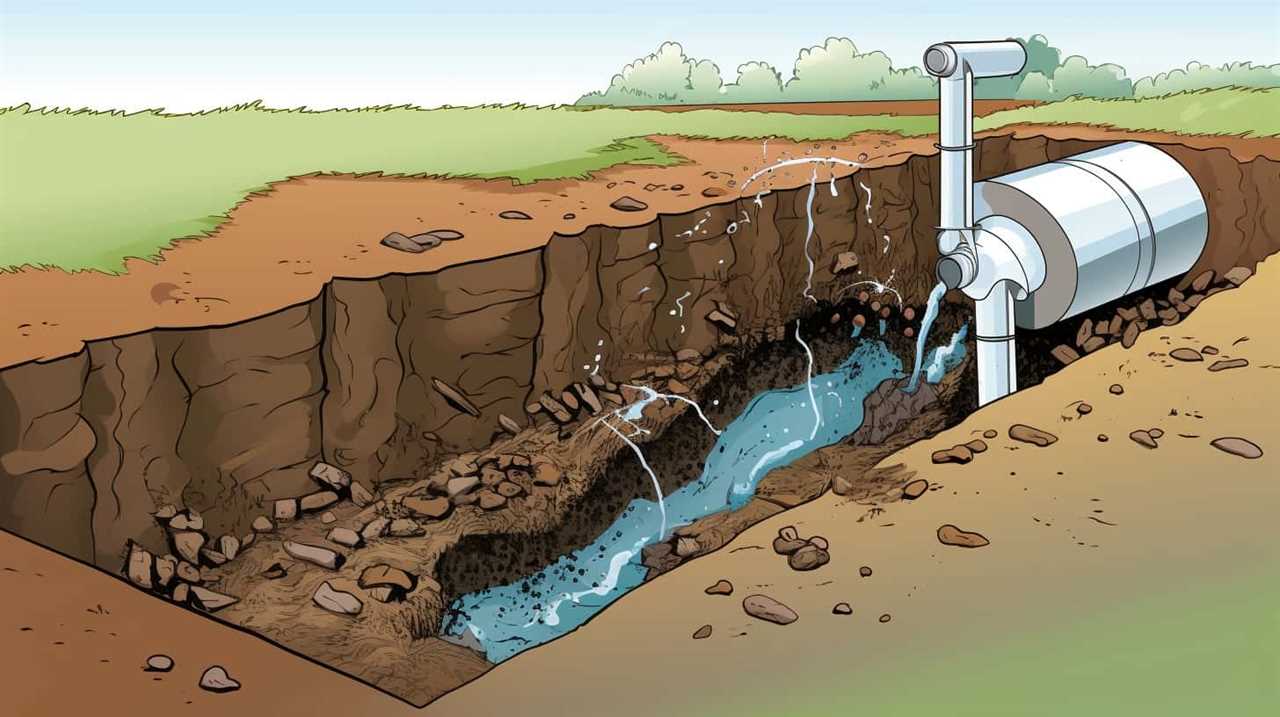
Additionally, composting cat waste is another alternative, although it requires careful handling and understanding of the process.
Both options have their pros and cons, and it’s important to weigh them carefully to make an informed decision.
What Are the Environmental Impacts of Flushing Cat Poop?
Composting cat waste and using biodegradable cat litter options are important considerations when discussing the environmental impacts of flushing cat poop. These alternatives can help mitigate the negative effects of flushing on our ecosystem.
Properly composting cat waste allows for its decomposition and transformation into nutrient-rich soil. This process not only helps to reduce the amount of waste that ends up in landfills but also provides a valuable resource for gardening and landscaping. By composting cat waste, we can close the loop and return nutrients back to the earth.
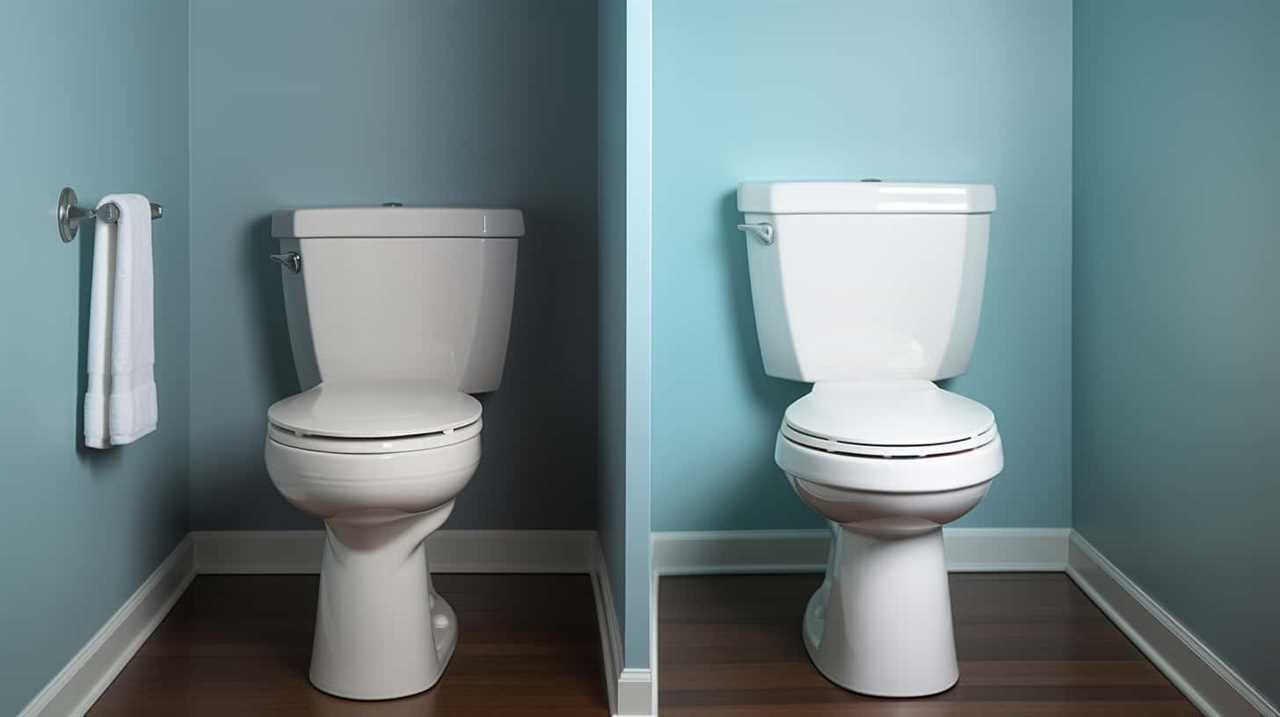
Biodegradable cat litters break down more easily, reducing the amount of waste that ends up in landfills. These litters are typically made from natural materials such as corn, wheat, or recycled paper, which can be safely broken down by natural processes.
Are There Any Guidelines From Municipalities Regarding Flushing Cat Waste?
Municipal regulations play a crucial role in guiding us on proper disposal methods for cat waste. These guidelines help ensure the safety and well-being of our environment. It’s important to follow these regulations to prevent any potential harm caused by flushing cat poop.
Proper disposal methods, such as using biodegradable bags and disposing of it in designated areas, can help protect our water systems and prevent the spread of harmful pathogens.
Conclusion
In conclusion, while some Reddit users may have had success flushing cat poop, it isn’t recommended due to the potential sanitary and environmental risks involved. Municipal guidelines often discourage flushing cat waste, and the plumbing system may not be equipped to handle it.
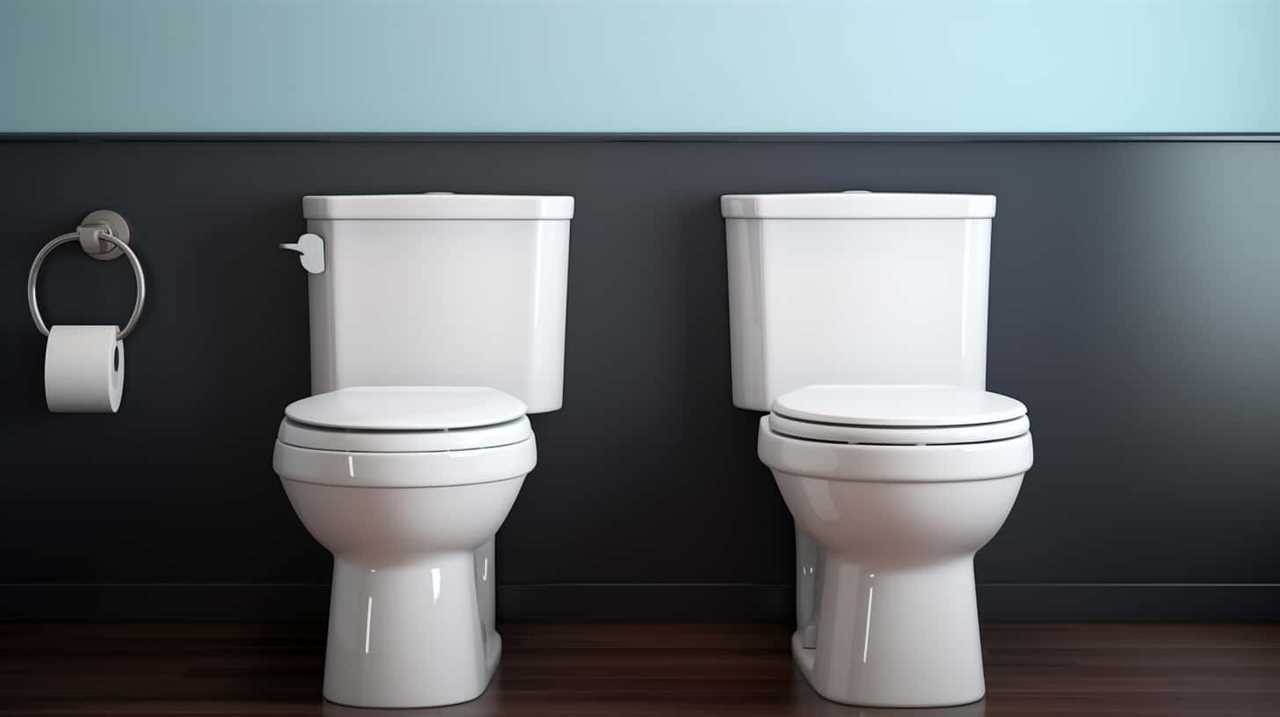
Instead, it’s safer to dispose of cat poop in a designated waste bin or use biodegradable cat litter that can be composted. Remember, when it comes to flushing cat poop, it’s better to err on the side of caution. As they say, ‘Don’t let your pipes pay the price.’



